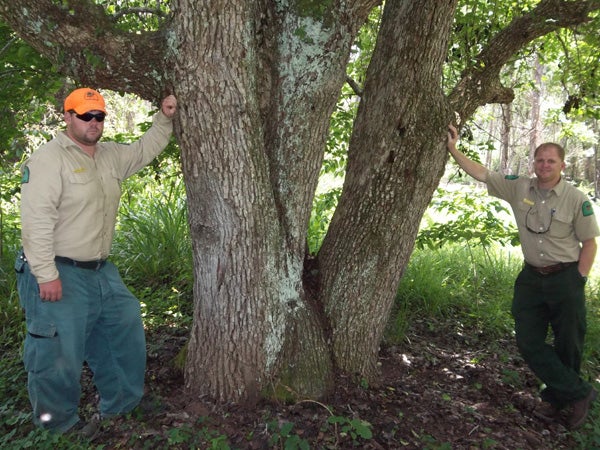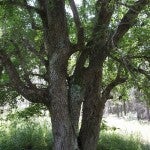
By Scott Mims
The word “champion” usually evokes images of athletes at the top of their game, hoisting a trophy in celebration of the ultimate victory.
There are many different kinds of champions, but not all of them are human—the Alabama Forestry Commission’s Champion Tree Program was created in 1970 to recognize and preserve the largest of each tree species in the state.
Chilton County was home to one of these, a 100-foot-tall Bitternut Hickory, which met its demise in the Jan. 23, 2012 tornado that struck the town of Maplesville. The tree stood in the backyard of the historic Noah Foshee home.
To those who appreciate nature, these trees are something special. The hickory’s branches rose skyward in a “V” formation, like the outstretched arms of a runner crossing the finish line. Its canopy provided beauty and shade to generations of residents and visitors to the Maplesville home. In a sense, losing the tree was like losing a member of the family.

But Chilton is home to yet another Champion Tree—a giant pear tree (Pyrus communis), which is unfortunately not as visible to the public.
“You have to know where this tree is,” said Brian Smith, Alabama Forestry Commission management specialist, making his way down a wooded path not far from New Convert Cemetery.
Getting to the tree may not be easy, but it’s hard to miss once you’re there—the tree’s massive trunk splits into four separate stems, not far from ground level. Even the individual stems dwarf the neighboring trees.
Trees submitted to the Champion Tree Program are measured by diameter at breast height (dbh), which is the diameter of the trunk at about 4.5 feet from the ground. Because the stems separate so close to the ground, the Champion pear tree’s official measurement had to be taken from the largest stem, which measures 25.7 inches dbh.
“That tree, really, is larger than what we’re measuring,” Smith said.
The other three stems measure 21.6 inches, 17.5 inches and 14.5 inches, in descending order. The tree is 68 feet tall and has a crown width of about 60 feet. Smith describes crown width as “sort of like the wingspan on a bird.”
“Those are all the measurements we take to plug into the Champion Tree formula,” he said.
When asked about the tree’s approximate age, Smith said it would be difficult to tell without causing damage.
The tree is owned by Isaac Britton of Jacksons Gap, Ala. Britton has the Champion Tree certificate, which was issued in 2003. The tree was “discovered” by another local forester, Britton said.
“I knew it was huge,” he said, adding he was not familiar with the Champion Tree Program at the time.
Britton was raised on a South Carolina farm and has always loved trees. He purchased 150-plus acres in western Chilton County where he planted many pine and cypress trees.
“All my life I wanted a forest I could walk through,” he said.
A search of the Champion pear tree will not yield much fruit, and Britton attributes this to late frosts and animals in the area.
Smith offers yet another explanation:
“Trees are just like people. The older they get, the slower they get,” he said.
Alabama’s Champion Tree Program is modeled after American Forest’s Big Tree Program. The state Forestry Commission uses a point system for judging the trees, based on each of the aforementioned measurements.
Anyone may nominate a tree by completing an online form. A representative of the Forestry Commission must verify all measurements. Eligible nominations are submitted to the National Register of Big Trees in Washington, D.C.
